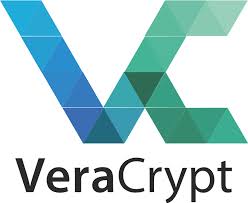In this article, we’ll see how to enhance data security by using VeraCrypt on Debian. At Bobcares, with our Server Management Service, we can handle your issues.
Overview
- An Introduction to VeraCrypt on Debian
- Key Features of VeraCrypt
- How to Install VeraCrypt on Debian?
- How to Launch VeraCrypt?
- How to Update VeraCrypt?
- How to Remove VeraCrypt?
- Conclusion
An Introduction to VeraCrypt on Debian
VeraCrypt is a robust, open-source encryption software designed to enhance data security. Leveraging advanced encryption algorithms like AES, Serpent, and Twofish, it offers powerful solutions for protecting sensitive data. Whether you need to create encrypted volumes or encrypt entire disks, VeraCrypt ensures confidentiality and protection from unauthorized access.
Key Features of VeraCrypt
1. Virtual Encrypted Disks: Creates a virtual encrypted disk within a file and mounts it as a real disk.

2. Full Partition Encryption: Encrypts an entire partition or storage device, including USB drives and hard disks.
3. Pre-Boot Authentication: Encrypts the drive where Windows is installed, requiring authentication before booting.
4. Real-Time Encryption: Automatic, real-time (on-the-fly), and transparent encryption.
5. Performance Optimization: Uses parallelization and pipelining for high-speed data access, comparable to unencrypted drives.
6. Hardware Acceleration: Supports hardware-accelerated encryption on modern processors.
7. Plausible Deniability: Protects against coercion through features like hidden volumes and hidden operating systems.
How to Install VeraCrypt on Debian?
VeraCrypt is not included in Debian’s default repositories. Follow these steps to install it:
Step 1: Update the System
Ensure the system is up-to-date to prevent match issues.
sudo apt update && sudo apt upgrade -y
Step 2: Install Prerequisites
Install necessary tools for importing external repositories.
sudo apt install dirmngr ca-certificates software-properties-common gnupg gnupg2 apt-transport-https curl -y
Step 3: Import GPG Key
Add the GPG key to verify the authenticity of the repository packages.
curl -fsSL https://notesalexp.org/debian/alexp_key.asc | gpg --dearmor | sudo tee /usr/share/keyrings/alexp_key.gpg > /dev/null
Step 4: Add the VeraCrypt Repository
Include the repository in the system’s source list.
echo 'deb [signed-by=/usr/share/keyrings/alexp_key.gpg] https://notesalexp.org/debian/bullseye/ bullseye main' | sudo tee -a /etc/apt/sources.list.d/alexp.list
Step 5: Update Package List
Update the package manager to recognize the new repository.
sudo apt update
Step 6: Install VeraCrypt
Install the software using APT.
sudo apt install veracrypt -y
How to Launch VeraCrypt?
After installation, we can launch VeraCrypt in two ways:
Command Line:
veracrypt
Desktop GUI:
Navigate to Activities > Show Applications > VeraCrypt and click the application icon.
For first-time users, consulting the official VeraCrypt documentation is highly recommended. It provides comprehensive guidance on advanced features.
How to Update VeraCrypt?
Keep VeraCrypt and other packages up-to-date by running:
sudo apt update && sudo apt upgrade -y
This ensures that the encryption software and system packages are running the latest versions.
How to Remove VeraCrypt?
If we no longer need VeraCrypt, follow these steps to uninstall it:
Uninstall VeraCrypt:
sudo apt-get remove --purge veracrypt -y
Remove Repository (if no other applications rely on it):
sudo rm /etc/apt/sources.list.d/alexp.list
If we accidentally delete the repository but still need it, re-import it using the commands from the installation guide.
[Need to know more? Get in touch with us if you have any further inquiries.]
Conclusion
VeraCrypt is a versatile tool for protecting sensitive data, offering robust encryption, ease of use, and features like hidden volumes for plausible deniability. With proper installation and maintenance, it becomes an essential component of a secure digital environment.







0 Comments